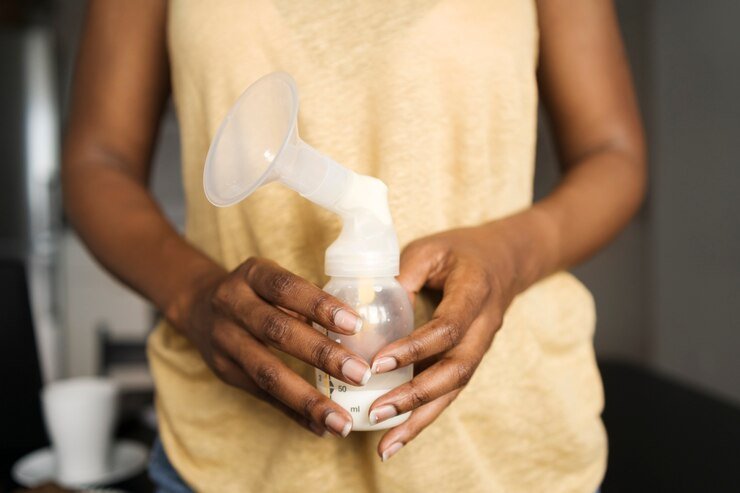Breastfeeding your baby is one of the most beautiful feelings that you can experience. It’s wonderful how a mother’s body reacts to their baby’s cries and coos, rushing to feed them with their milk. Unfortunately, not all mothers are able to breastfeed their little ones like everyone else. This could be due to health concerns, or in some cases, the baby can also have latching issues. This is why breast pumps can be such a lifesaver. So, if you are also in a similar position, then this blog is for you. Here, we will explain how to use electric breast pumps to express milk and feed your baby easily.
Getting Started with Breast Pumps
1. Keeping It Clean
As a first step of breastfeeding, you are supposed to make sure that your hands and breast pump are completely clean. This is because hygiene is extremely important when it comes to your baby! So, you should start with washing your hands. This way you will keep the milk safe from germs. Then, check that your pump, milk bottles, and other accessories are also clean and dry before using them. You should also clean them after using the items.
2. Preparing for Your Pumping Session
Secondly, it’s time to prepare for your pumping. To start with expressing your milk, it’s better to find a quiet place where you can be the most comfortable. So, you should make sure that you are completely relaxed and easy. Breathing deeply, playing soothing music, or even looking at a photo of your baby can help your body release oxytocin. This hormone is responsible for milk let-down and plays a key role in lactation. Massaging during pumping can further stimulate milk flow and help you express more milk.
3. Positioning the Pump
After making sure that everything is clean and you are comfortable as well, it’s time for you to carefully position the pump over your breast. Place the breast shields (flanges) over your nipples so they align properly. Make sure that the shields are not too tight or too loose, because this can also impact your lactation. The shield should make a nice and secure fit around your breast so that it creates a seal. Many pumps come with different flange sizes, so you can find the best fit for your body.
4. Pumping Techniques
Whenever you get electric breast pumps, you’ll also have different suction settings as well. So, initially, it’s ideal to start with a low suction strength. Once you get used to it, you can gradually increase it. It might take a few minutes for your milk to start flowing, so don’t worry if nothing happens right away. If you’re using a single pump, spend about 10–15 minutes on each breast. Once the flow slows, switch sides and repeat.
How Often Should You Pump?
This is a common question that mothers often ask, especially if it’s their first time using breast pumps. The simple answer is that you should pump as often as your baby would want to feed. That will regulate your milk as well. You can start a pumping session every 2 to 3 hours, and with each session, spend about 10-15 minutes per breast. Another good way to set a routine is by getting double electric breast pumps. With these pumps, you can express milk from both sides,
Storing Pumped Milk
Once you are done with expressing your milk, the journey does not end there! There are also a few things that you should consider after that to keep the milk fresh and safe for your baby. Here are a few helpful tips for you:
- After your pumping session, put the milk in food-grade plastic or glass containers. Make sure that they don’t contain harmful chemicals like BPA.
- Then, it’s also a good idea to label the bottles with the date. This way, you will know how old each batch of milk is.
- Additionally, you can store the milk in the refrigerator for up to 4 days and in the freezer for 6 to 12 months.
Additional Tips for a Smooth Pumping Experience
- Comfort is key: Use a pumping bra to hold the shields in place, freeing up your hands. If you’re holding the pump manually, press gently against the breast to avoid compressing tissue, which can reduce milk flow.
- Monitor your shield fit: A poorly fitting shield can cause discomfort or reduce milk output. Adjust or try a different size if needed.
- Relaxation techniques: Deep breathing or soothing music can make pumping sessions more comfortable and productive.
Conclusion
In a nutshell, when mothers are new to using breast pumps, it can seem confusing at first. This can especially be the case with electric breast pumps that have more than one speed and suction strength. However, pumping does not have to be difficult. You should make sure that all the pumping supplies along with your hands are clean. Then, sit in a relaxing place for your session and then gradually increase the pumping strength after positioning it perfectly. Finally, we also suggest that you pay attention to your body’s cues and make sure that there is no discomfort in the process.



